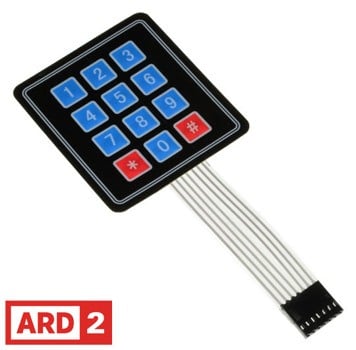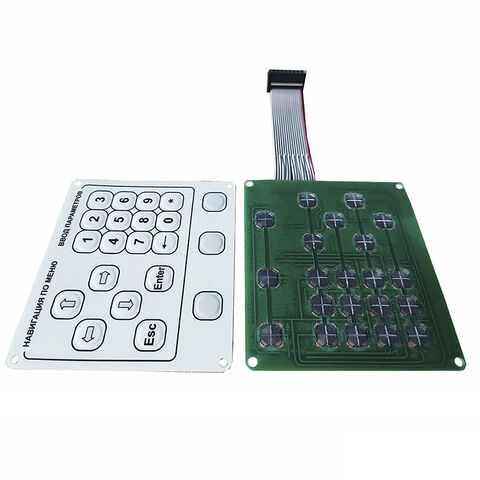Why a Membrane Switch Is Ideal for Industrial and Medical Applications
Why a Membrane Switch Is Ideal for Industrial and Medical Applications
Blog Article
Understanding Membrane Switches Over: The Trick to Trusted and sturdy Controls
Membrane layer changes represent a critical facet of modern-day user interface style, mixing capability with durability in numerous applications. As we check out the details of membrane switches, it comes to be clear that their function in boosting control systems is both complicated and extensive, increasing concerns about just how ideal to leverage their abilities in future technologies.
What Are Membrane Layer Switches?
Membrane layer buttons are a sophisticated option in the realm of customer interface modern technology, combining capability and style perfectly. These gadgets act as a user interface in between users and digital systems, integrating numerous elements right into a portable format. Commonly built from flexible, thin layers of materials, membrane switches are made to reply to touch, enabling users to interact with equipment and digital gadgets efficiently.
The primary elements of a membrane layer button consist of a printed circuit layer, graphic overlay, and a spacer layer that stops unplanned activation. The visuals overlay can be tailored to reflect brand name identification or individual choices, boosting looks while making sure functionality. Membrane switches are commonly made use of in numerous applications, consisting of medical devices, customer electronic devices, and commercial equipment, owing to their resilience and resistance to ecological aspects such as wetness and dust.
One of the vital advantages of membrane layer switches is their capability to stand up to deterioration, making them excellent for high-traffic environments. Additionally, they are light-weight and require marginal space, enabling for innovative styles in item growth. Generally, membrane switches over represent a functional and reliable option for modern digital interfaces, weding innovation with user-centric style principles.

Just How Membrane Switches Work
The operation of membrane layer changes joints on a simple yet reliable system that translates user input right into electronic signals. When a customer presses the switch, the leading layer deforms, allowing a conductive aspect in the circuit layer to make contact with a corresponding conductive pad on the underside of the graphic overlay.
The design of membrane buttons can differ, but they often incorporate domes or tactile aspects to offer responses to the user, improving the overall experience. The products utilized in membrane layer switches, such as polyester or polycarbonate, contribute to their resilience and resistance to environmental elements, consisting of wetness and dust. The published circuits are normally encapsulated, which shields them from wear and tear over time.

Advantages of Membrane Buttons
Among the primary advantages of membrane layer switches is their adaptability in style, permitting them to be customized to fulfill particular customer needs and visual needs. This versatility encompasses numerous markets, where different forms, sizes, and colors can be employed to enhance user interaction and aesthetic allure.
In addition, membrane buttons are known for their durability. Constructed from robust materials, they are immune to dirt, moisture, and physical wear, which considerably prolongs their life-span contrasted to conventional mechanical switches. This longevity makes them specifically appropriate for high-traffic atmospheres and applications needing longevity.

In addition, membrane buttons offer a structured profile, causing a thinner layout that can be incorporated into numerous tools without adding bulk. This attribute not just enhances the visual allure yet also adds to an extra ergonomic item design.

Applications of Membrane Layer Switches
Versatile and user-friendly, membrane switches find applications throughout a vast array of industries, including clinical gadgets, consumer electronics, and commercial tools. In the medical field, these buttons are integral to gadgets such as analysis devices, individual tracking systems, and mixture pumps, where integrity and convenience of cleaning are vital. see this page Their capability to withstand extreme settings and maintain functionality makes them excellent for such applications.
In consumer electronic devices, membrane layer buttons are used in products like microwaves, washing makers, and remote controls - membrane switch. Their sleek layout permits for instinctive customer interfaces, enhancing the total user experience while offering toughness and resistance to tear and put on
Industrial equipment additionally takes advantage of membrane layer buttons, particularly in control panels for machinery and automation systems. These switches use protection against dirt and dampness, making sure regular efficiency in challenging settings. Moreover, their customizable features enable makers to tailor them click here to find out more to specific operational requirements, enhancing efficiency and functionality.
Selecting the Right Membrane Change
When selecting a membrane switch, it is crucial to think about different elements that influence efficiency and suitability for specific applications. The primary considerations consist of ecological problems, tactile feedback, toughness, and design specs.
First, examine the operating setting; buttons exposed to moisture, chemicals, or severe temperature levels need certain products to make certain long life and performance. Next, examine the need for responsive comments. Relying on user interaction, some applications may gain from a tactile action to confirm activation, while others may prefer a non-tactile design for aesthetic factors.
Durability is one more crucial factor; membrane switches ought to be developed to withstand regular usage, impacts, and abrasion. Make certain the picked button can endure the anticipated lifecycle, especially in high-usage scenarios.
Verdict
To conclude, membrane switches work as important components in the layout of sturdy and reputable control systems throughout various industries. Their small layout, incorporated with durable building and construction and customizable features, improves individual communication while making certain durability sought after atmospheres. The flexibility of membrane layer switches enables tailored solutions that satisfy certain functional requirements, enhancing their relevance in modern-day technology. membrane switch. As markets proceed to progress, the importance of incorporating reliable membrane switch remedies can not be overemphasized.
Membrane switches over stand for an important aspect of modern user interface design, mixing performance with strength in various applications.Membrane layer switches are a sophisticated solution in the world of user interface innovation, incorporating performance and layout perfectly. Normally constructed from versatile, slim layers of products, membrane layer switches are developed to react to touch, enabling individuals to interact with machinery and electronic devices properly.
The design of membrane buttons can vary, yet they usually incorporate domes or tactile aspects to provide responses to the individual, enhancing the general experience.In conclusion, membrane switches Recommended Reading offer as essential parts in the design of trustworthy and sturdy control systems across numerous sectors.
Report this page